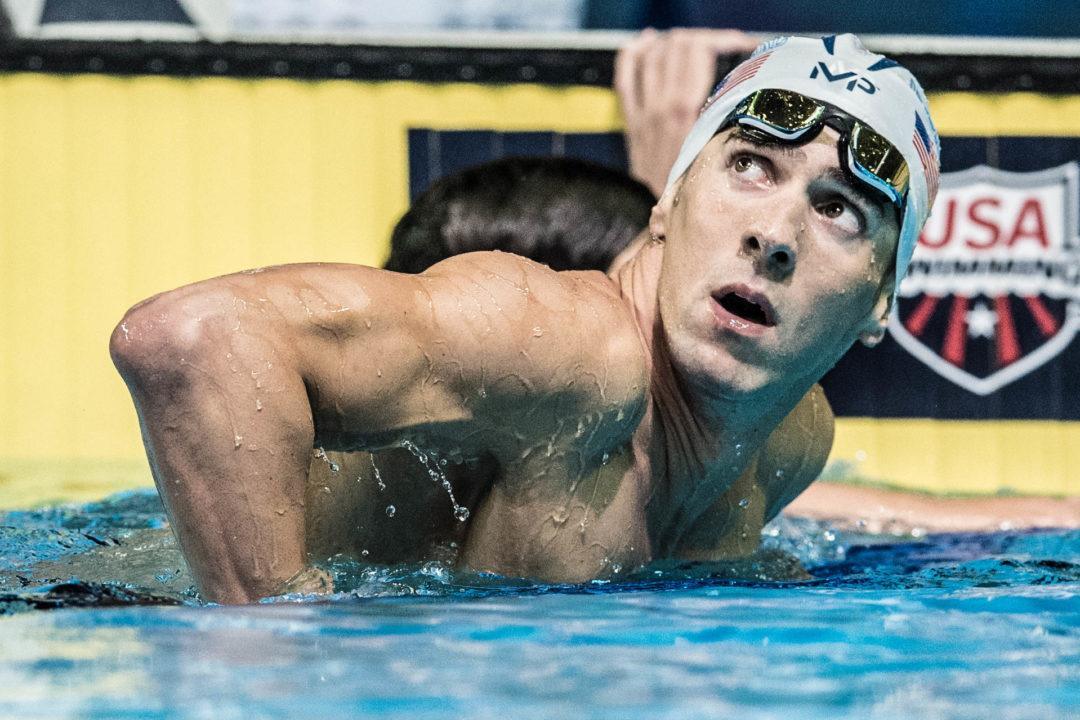TritonWear and Swim Swam are bringing you the best in swimming race analysis. With the power of TritonWear, you can have an in-depth analysis of your practice every day with zero effort. Today we are having a closer look of one of the fiercest duels of 2007 FINA World Championship: Michael Phelps vs. Pieter van den Hoogenband.
The most epic showdown between rivals Michael Phelps and Pieter van den Hoogenband was in the 200 freestyle on day three of the 2007 World Championships in Melbourne. Phelps had already earned his reputation as one of the greatest swimmers in the world, but his Dutch competitor was a serious threat with multiple Olympic and World Championship medals to his name. Also in the mix was Korean freestyler Park Tae-Hwan, who had already claimed the 400 freestyle gold medal on the first day of competition.
The opening 100 of the race fueled the hype as Phelps and van den Hoogenband flipped almost neck-and-neck with splits of 51.00 and 51.17 respectively. Yet despite the similarities in their times, the two swimmers showed big disparities in other metrics that would end up making the difference in the end. Phelps was much stronger underwater than van den Hoogenband, giving him an advantage on each turn so that the Dutch swimmer had to work extra hard to keep pace. Phelps’ stroke rate was more relaxed and his stroke count was lower than his competitor’s, yet he still managed to maintain speed. This high efficiency is reflected in his stroke index values, which were significantly greater than van den Hoogenband’s over the entirety of the swim – a fact that would give him a big advantage at the end of the race.
Though Park closed the gap on the third 50 and it appeared as though van den Hoogenband might be able to challenge Phelps as they approached the 150 meter mark. But Phelps had far too much energy left in the tank. He absolutely destroyed van den Hoogenband on the last 50. Blasting off the final turn, he spent two seconds longer underwater as he surged ahead with powerful dolphin kicks. This last turn was actually the longest Phelps stayed underwater of any, demonstrating his incredible stamina at the end of races. After a strong breakout, he maintained his stroke rate and managed to increase his speed to 1.91 m/s, higher than his previous two 50s.
As the swimmers charged down the final stretch, Phelps extended his lead until he was over a body length and a half ahead of his Dutch competitor. His last 50 was the most impressive, dropping his split below that of his previous two 50s to a speedy 26.13, a full two seconds faster than van den Hoogenband. It was this final push at the end that allowed him to overtake the world record line set by Ian Thorpe. He touched for gold in a time of 1:43.86, and in doing so became the first man under 1:44 and set a record for the greatest margin of victory. Though Phelps ran away with the victory in the end, this was an epic showdown for the history books.
With TritonWear, you can explore your practice with an in depth analysis every day with zero effort and track your progress throughout the season. Train smarter with TritonWear. Find out more below:
Swimming analysis is courtesy of Tritonwear, a SwimSwam partner.
AB


I think it should be noted the suit differences between Phelps and van den Hoogenband
It was in 2007, a textile world, when nobody cared about the suits’ lenght.
For instance, Thorpe swam all his WRs (and his races) in a complete suit, with even his arms suited.
Anyway, when he won his Im and fly races in 2007 and before, Phelps was in leggings like VDH (he didn’t use leggings just for 100 and 200 free).
Did anyone note the list of times towards Beijing08 written by Bowman and Phelps after World07 and briefly showed between minutes 10’40” and 11′ in this interview (The Golden Boy) https://www.youtube.com/watch?v=zJ_LXsPFens
with Anderson Cooper, made after Olympics08?
Some remarkable times: 400free 3.39.0 (!), 100fly 49.5, 200 fly 1.51.1,1500sl 15.05-15.10, 200im 1.53.5, 200 back 1.53.5…
And during the interview with Cooper, Phelps said that at Olympics08 he failed two races: 100 and 200 fly.
Anyway, I think that managing the enormous pressure towards the 8 golds was an heavy, heavy load even for Phelps during the season2008 (and there was also the broken wrist in the fall2007) and during the Olympic races.
There needs to be a disclaimer stating that DPS and stroke rate are not corrected for distance travelled underwater, and thus are skewed and not representative of the swimmer’s true stroke efficiency.
Glad to have been witness to the greatest while growing up as a swimmer, hope my children will have the same chance
I will NEVER forget Melbourne 2007, the Great One at his best! Even more impressive to me was the 200 fly, 1:52,09 in a jammer.
MP at his peak during that week of March 2007.
The best shape of his career.
The only thing that makes me doubt this was his 200 free in Bejing.
And his 4 IM